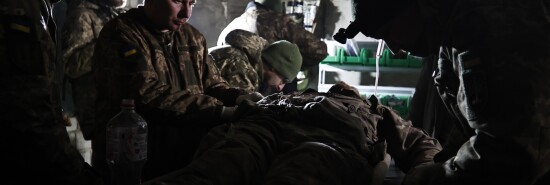
A brutal winter is coming for Russian forces in Ukraine
Tom Rogan
Figuratively and literally, winter is coming for Russian forces in Ukraine. Russian leaders should remind themselves of how another commander once suffered amid winter while on enemy territory.
“My cavalry is dismounted and many horses are dying…” That was how Napoleon described his situation at the start of his infamous retreat from Moscow in 1812. Far worse was to come for Napoleon and his Grande Armée. By the time it had finally concluded a long and brutal retreat across the vast Russian countryside, only 25% of Napoleon’s once 400,000 strong force would still be alive. Winter bit just as hard as Russian forces. But now a similar winter woe is coming for Russian forces in Ukraine. Forced into a structural defensive posture and beset by catastrophically poor equipment, logistics trains, morale, command and control, Russian forces face a brutal December and January.
It’s already below freezing in many areas along the front lines in south-central and eastern Ukraine. By the end of December, however, the average daily low in these areas will likely fall another four or five degrees to around 21°F. Before things start warming up in early February, the average lows will be around 19°F. That’s unpleasant weather for those living in peace with heating and warm clothes. For poorly led and equipped Russian forces engaged in unpredictable combat against motivated Ukrainians, it’s a recipe for deep misery. We will soon learn how utterly ill-equipped Russian forces are for the winter. Hypothermia will be a big issue.
The degree of Russia’s vulnerability here is hard to overestimate. Vladimir Putin is attempting his own winter gambit by throwing his increasingly sparse missile stocks at Ukraine’s power grid. But Putin’s problem is that Ukraine is, if painfully, absorbing these strikes and retaining the will and means to fight. Russian forces in Ukraine will lack the same winter resolution. Indeed, Putin’s conscripts may well make things even worse, forcing greater rationing of equipment across deployed forces.
Russia’s best hope? That Ukraine’s far better supplied forces may restrict their own offensive action in order to avoid bloody winter combat. But that’s unlikely. Ukraine’s special operations and artillery units are well-equipped and highly mobile. They will take advantage of Russia’s impulse for static winter defenses. Considering its doctrinal sympathies, the British Army, Ukraine’s most trusted foreign operations adviser, will likely advise further strikes to hemorrhage Russian supply lines and isolate expanding pockets of Russian front line forces. Already short in numbers and poorly maintained, Russian vehicles, artillery and other critical equipment will suffer increasing malfunctions in the coming cold.
All of this begs a question: Why on Earth would Ukraine be tempted by the increasingly obvious pressure of France and Germany to begin conciliatory negotiations with Russia? With Putin still insisting on absurd ground rules for prospective negotiations, it should be clear to Ukrainian commanders that their best course of action is to escalate offensive action. That’s the way for Ukraine to flip the script on Putin’s favorite stratagem: leveraged negotiations.
